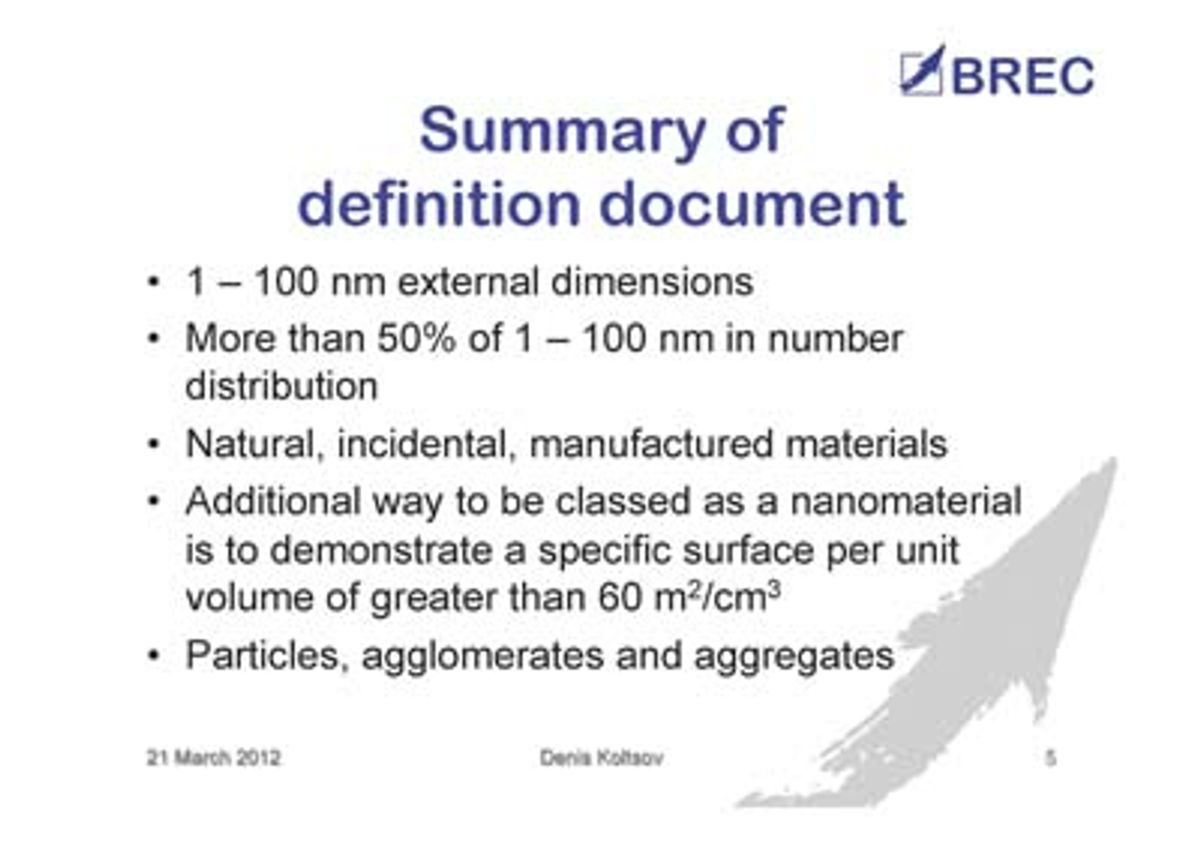Last year, I covered some of the European Union's (EU) machinations in trying to arrive at a definition for nanotechnology. The EU ultimately published a definition in October last year.
There was a fair amount of surprise at some aspects of the definition, in particular its inclusion of not only manufactured nanoparticles but also the natural and incidental varieties. This made the definition of nanomaterials so broad that industries that may never had given a second thought to nanotechnology found that they too were swept up into this regulatory framework.
The UK-based Nanosight, whose nanoparticle measurement instruments I covered back in 2007, decided to offer a webinar that would try to bring some clarity to a definition that seemed to lack it.
“We’ve met people recently who work on the legal side within large chemical organizations, who up until October last year didn’t know anything about nanotechnology and suddenly they’re going to be caught within legislation, which is quite a shock to them,” says Warren in the webinar.
Warren put the question of why the definition was made so broad to Dr. Denis Koltsov, a leading international expert in nanotechnology legislation and control. According to Koltsov, it seems that it was just impossible to determine whether a nanoparticle that had found its way into a nanomaterial matrix was deliberately manufactured or was a naturally occurring nanoparticle. In other words, since a regulator can’t differentiate between the various origins of the nanoparticles they just included them all.
You don’t have to extrapolate too much to conclude that companies that have been making things for years—maybe decades—without the slightest inkling that nature had put nanoparticles into their products are now part of this regulation. It got even more complicated in February of this year when the French government issued Decree # 2012-232, which ordered that anybody producing or transporting these nanomaterials in amounts of 100 grams or more would have to make a report to the French government.
While this webinar’s aim was to clarify the EU nanomaterial definition—which it largely succeeds in doing—I think more than anything I found its clarifications alarming. I joked back in October that the EU had succeeded in turning the idea of a definition on its head and offered something that broadened the definition of a nanomaterial to the nearly infinite. But now it appears that governments are now going to take this absence of a definition as an opportunity to place an entirely new layer of regulations on products and industries that seem remote from the world of nanomaterials. I don’t think it’s so funny any more.
Dexter Johnson is a contributing editor at IEEE Spectrum, with a focus on nanotechnology.




